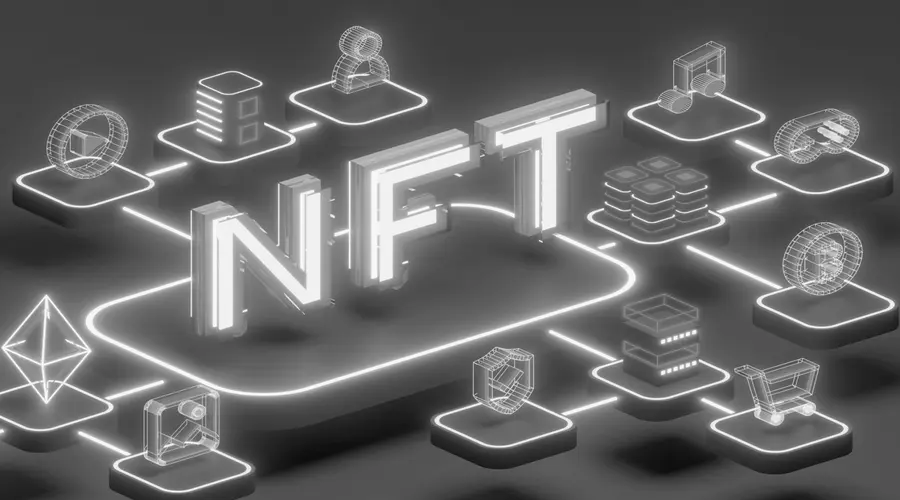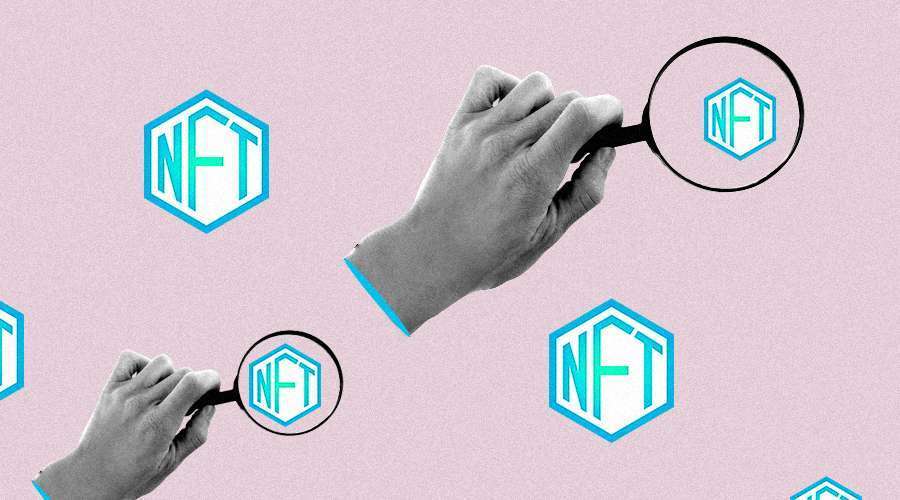Regulatory Considerations for NFT Interoperability

Regulatory Considerations for NFT Interoperability
In recent years, Non-Fungible Tokens (NFTs) have gained significant popularity in the digital world. NFTs represent unique digital assets that can be bought, sold, and traded on various blockchain platforms. As the NFT market continues to expand, one crucial aspect that needs careful consideration is interoperability. Interoperability refers to the ability of NFTs to seamlessly interact and transfer between different blockchain networks. This article explores the regulatory considerations surrounding NFT interoperability and highlights the challenges and potential solutions in this evolving landscape.
Introduction: The Rise of NFTs
Non-Fungible Tokens (NFTs) have emerged as a groundbreaking phenomenon in the digital world. These unique digital assets have revolutionized the concept of ownership and authenticity, opening up exciting possibilities for creators, collectors, and investors. NFTs have gained immense popularity across various industries, including art, music, gaming, and virtual real estate. The ability to tokenize and trade one-of-a-kind digital items has created a new paradigm, where scarcity and provenance hold significant value. As NFTs continue to capture the attention of the global audience, understanding their rise and the implications they bring becomes essential in navigating the ever-evolving digital landscape.
Understanding NFT Interoperability
NFT interoperability refers to the ability of NFTs to function across multiple blockchain networks, allowing seamless transfer, trading, and utilization. Currently, most NFTs are limited to specific blockchain ecosystems, making it challenging for users to freely interact with assets across different platforms. Achieving interoperability is crucial for the widespread adoption and utility of NFTs.
NFT interoperability refers to the ability of non-fungible tokens (NFTs) to operate across different blockchain networks seamlessly. Currently, NFTs are primarily confined to specific blockchain ecosystems, limiting their transferability and utility. Interoperability aims to break down these barriers, allowing NFTs to function and move freely between various platforms.
To achieve interoperability, compatibility and communication protocols need to be established between different blockchain networks. This involves creating standardized metadata formats, smart contracts, and data structures that allow NFTs to retain their unique properties and functionality when transferred across platforms.
By enabling NFT interoperability, users gain increased flexibility and accessibility. They can freely transfer and trade their NFTs across different marketplaces and platforms, regardless of the underlying blockchain technology. This opens up new possibilities for creators, collectors, and investors, facilitating a more interconnected and vibrant NFT ecosystem.
As the NFT market continues to evolve, the development of interoperability solutions and the establishment of common standards are key to unlocking the full potential of NFTs. Interoperability enhances liquidity, market efficiency, and overall adoption of NFTs, enabling broader participation and expanding the possibilities within the digital asset space.
Regulatory Challenges in NFT Interoperability
- urisdictional Compliance: NFTs operate in a global digital landscape, making it challenging to navigate the jurisdictional laws and regulations of different countries. Ensuring compliance with varying legal requirements poses a significant regulatory challenge.
- Intellectual Property Rights Protection: NFTs often represent digital artworks, music, or other creative content. Protecting intellectual property rights becomes complex when NFTs are transferred across multiple blockchain networks. Clear guidelines and mechanisms must be established to safeguard the rights of creators and prevent unauthorized use or distribution.
- Consumer Protection: NFT transactions involve financial value, and it is crucial to establish consumer protection measures. As NFTs move between different platforms, ensuring transparency, security, and fair practices becomes essential to protect consumers from fraudulent activities and scams.
- Anti-Money Laundering (AML) Compliance: NFTs have the potential to be used for money laundering purposes. Regulators need to address AML concerns and implement effective measures to detect and prevent illicit activities within the NFT ecosystem.
- Regulatory Fragmentation: The absence of standardized regulations for NFTs across jurisdictions leads to regulatory fragmentation. Harmonizing regulatory approaches and creating international frameworks become necessary to promote interoperability and ensure consistent compliance requirements.
- Investor Protection: As the NFT market gains popularity, protecting investor interests becomes crucial. Regulators need to establish disclosure requirements, investor education initiatives, and mechanisms to address market manipulation and fraud, ensuring a fair and transparent market environment.
- Data Privacy and Security: NFTs often involve the collection and storage of personal and transactional data. Regulatory challenges arise in safeguarding user privacy, ensuring data security, and establishing protocols for secure data management in NFT interoperability.
- Taxation and Financial Reporting: The tax implications of NFT transactions and the financial reporting requirements pose regulatory challenges. Establishing clear guidelines on tax obligations and financial disclosures for NFT holders and marketplaces is essential.
- Cross-Border Transactions: NFT interoperability involves cross-border transactions, which bring additional regulatory complexities. Addressing currency exchange regulations, cross-border payment mechanisms, and ensuring compliance with international trade laws are crucial aspects of regulatory challenges.
- Technological Advancements: Regulatory challenges also emerge from the rapid technological advancements in the blockchain and NFT space. Regulators must stay informed and adapt to evolving technologies to effectively address regulatory concerns without stifling innovation.
Navigating these regulatory challenges requires collaboration between industry stakeholders, regulatory authorities, and legal experts to establish clear guidelines, frameworks, and best practices for NFT interoperability while ensuring compliance, protection, and a thriving market environment.

Potential Solutions for NFT Interoperability
Standardization of Metadata and Smart Contracts
To achieve interoperability, standardization of metadata and smart contracts is necessary. Establishing common protocols and data structures can enable seamless communication between different blockchain networks. This would allow NFTs to retain their properties and functionality even when transferred across platforms.
Cross-Chain Bridges and Wrappers
Cross-chain bridges and wrappers act as intermediaries between different blockchain networks, facilitating the transfer and conversion of NFTs. These solutionsbridge the technological gaps and enable interoperability creating compatibility between disparate blockchain ecosystems. By utilizing cross-chain bridges and wrappers, users can transfer their NFTs across different platforms while maintaining their unique properties and attributes.
Regulatory Frameworks and Collaborations
Regulatory frameworks play a vital role in ensuring a secure and compliant environment for NFT interoperability. Collaboration between blockchain industry stakeholders, regulatory authorities, and standard-setting organizations can help establish guidelines and best practices. These frameworks can address legal and regulatory challenges, provide clarity on jurisdictional requirements, and promote responsible NFT transactions.
Balancing Interoperability with Security and Trust
While achieving NFT interoperability is crucial, it must be balanced with security and trust. As NFTs move across different blockchain networks, the risk of unauthorized access, tampering, or loss increases. Implementing robust security measures, such as encryption, multi-factor authentication, and decentralized identity solutions, can enhance the integrity and protection of NFTs during interoperability.
Achieving NFT interoperability is not without its challenges, particularly in maintaining the security and trust of participants. While enabling seamless transfer and utilization of NFTs across different blockchain networks is essential, it must be done in a way that prioritizes security and builds trust among users.
To strike the right balance, robust security measures must be implemented throughout the entire interoperability process. Encryption techniques, multi-factor authentication, and secure identity verification protocols can help safeguard the integrity of NFTs during transfer. It is crucial to address vulnerabilities and potential risks associated with unauthorized access, tampering, or loss of assets.
Additionally, transparent and auditable systems are necessary to ensure the trustworthiness of NFT transactions. Immutable records on the blockchain, smart contract audits, and transparent governance mechanisms can enhance transparency and accountability. By promoting open and verifiable practices, users can have confidence in the authenticity and ownership of NFTs.
Finding the equilibrium between interoperability, security, and trust is an ongoing effort. Continuous technological advancements, collaboration between industry players, and proactive regulatory measures are key to building a robust and trustworthy ecosystem that fosters the seamless transfer of NFTs while ensuring the highest levels of security and user confidence.
Conclusion
NFT interoperability holds immense potential for unlocking new opportunities and driving the widespread adoption of digital assets. However, to realize its full potential, regulatory considerations must be addressed. Compliance with jurisdictional laws, intellectual property rights protection, and consumer protection are critical aspects that require careful attention. By implementing standardized protocols, cross-chain solutions, and collaborative regulatory frameworks, the NFT ecosystem can thrive while maintaining security, trust, and transparency.
Frequently Asked Questions (FAQs)
Q1: Can NFTs be transferred between different blockchain networks?
Yes, with the advent of interoperability solutions like cross-chain bridges and wrappers, it is possible to transfer NFTs between different blockchain networks, allowing users to access and utilize their assets across platforms.
Q2: How can creators protect their intellectual property rights in NFT interoperability?
Creators can protect their intellectual property rights utilizing digital watermarking, licensing mechanisms, and registering their content on blockchain-based copyright platforms. These measures help establish ownership and prevent unauthorized duplication or distribution.
Q3: What are the risks associated with NFT interoperability?
The risks associated with NFT interoperability include potential security vulnerabilities, loss of assets during transfer, regulatory compliance challenges, and the risk of fraudulent activities. Implementing robust security measures and adhering to regulatory frameworks can mitigate these risks.
Q4: Are there any industry standards for NFT interoperability?
While industry standards for NFT interoperability are still evolving, organizations like the InterWork Alliance (IWA) and the World Wide Web Consortium (W3C) are actively working on developing protocols and standards to facilitate seamless interoperability.
Q5: How can regulators ensure a safe and compliant environment for NFT interoperability?
Regulators can collaborate with industry stakeholders to establish regulatory frameworks that address legal challenges, protect consumer rights, and ensure compliance with anti-money laundering and know-your-customer requirements. These frameworks can provide clarity and guidance for NFT transactions while fostering innovation in the space.
I’ve been involved with cryptocurrency for three years. I have been a vocal advocate for the people and an active part of the community. I am well-known for my book “Crypto Revolution: An Insider’s Guide to the Future of Money” and blog “The Crypto Chronicles.” In addition, I frequently contribute to CoinDesk, one of the top news websites for cryptocurrencies. I write as well as invest actively in a number of bitcoin initiatives.
